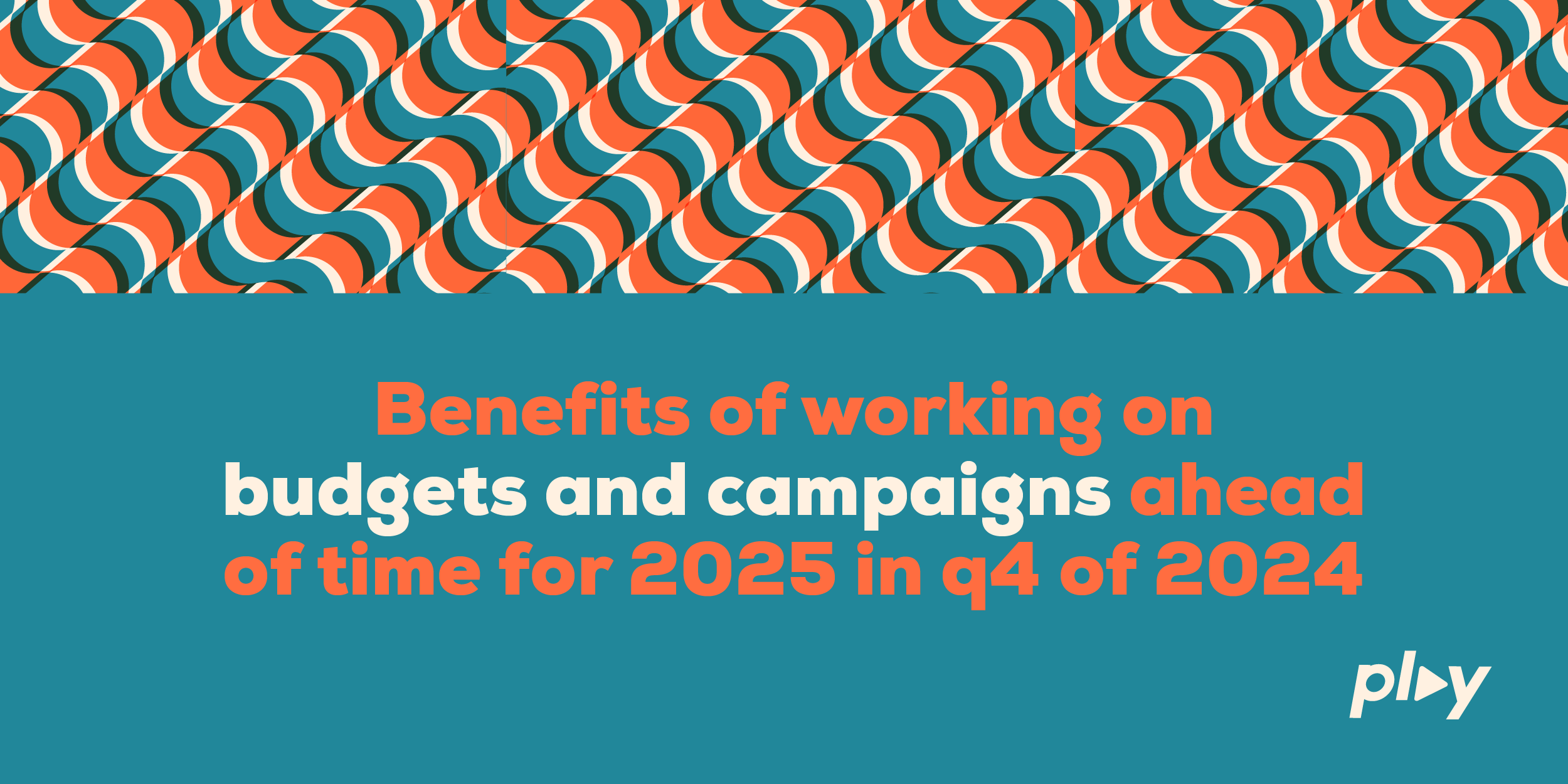2025 Is Closer Than You Think: The Strategic Advantage of Planning Your Marketing Budgets and Campaigns in Q4 2024
As the year begins to wind down, it’s tempting to ease up on the gas and coast into the new year. However, for businesses looking to thrive in 2025, Q4 of 2024 is not the time to slow down—it’s the time to plan. The marketing landscape has always been dynamic, and as we navigate economic uncertainties, the importance of pre-planning budgets and campaigns has never been clearer. As decision-makers, we must not only prepare for what lies ahead but do so with precision, strategy, and foresight. Let’s explore why working on budgets and campaigns ahead of time is more than just a best practice—it’s a strategic advantage.

-
The Power of Proactive Planning: Setting the Stage for 2025
Waiting until the calendar flips to 2025 to start planning your marketing strategy is a missed opportunity. Research consistently shows that companies that engage in proactive planning outperform their peers in both brand awareness and market share. According to a 2023 survey by Gartner, companies that planned their annual marketing budgets in Q4 of the previous year reported a 20% increase in campaign ROI compared to those who waited until Q1. This isn’t just about getting ahead; it’s about gaining a competitive edge when it matters most.
Planning ahead allows you to allocate resources more effectively, anticipate market changes, and pivot your strategy based on early indicators. By evaluating your marketing budget in Q4, you can identify opportunities to invest in high-impact areas that may be overlooked if planning is delayed. It’s not just about knowing your numbers—it’s about understanding how to make those numbers work for you.
-
Value vs. Budget: The Art of Strategic Allocation
Determining value versus budget isn’t just a numbers game; it’s a strategic evaluation of your goals, market conditions, and customer behavior. In an economic landscape where every dollar counts, making data-driven decisions on where to allocate funds can be the difference between stagnation and growth.
The key is to focus on high-value opportunities that align with your business objectives. For example, if customer acquisition costs are rising, consider shifting budget toward customer retention strategies, which can be 5 to 25 times more cost-effective according to research by Bain & Company. Similarly, in times of economic downturn, doubling down on brand awareness campaigns can position your business for a stronger rebound when the market stabilizes. A McGraw-Hill study found that companies that maintained or increased advertising during a recession saw a 256% increase in sales over their competitors once the economy recovered.
This approach doesn’t just protect your business in tough times—it primes it for future growth.
-
Seize the Opportunity: Economic Hardships as a Catalyst for Strategic Spending
Economic hardships often lead to budget cuts, particularly in marketing. However, this mindset can be a misstep. During challenging times, competitors are likely scaling back, which means there’s less noise in the market. This presents a unique opportunity: if you can afford to maintain or even increase your marketing spend, you can capture market share at a lower cost per impression or engagement.
Consider this: during the 2008 financial crisis, companies that increased their marketing spend saw an average market share growth of 1.6%, while those that cut spending saw no growth, according to a study by Harvard Business Review. In essence, while others pull back, the market is yours to conquer. This is the time to be bold, to take calculated risks, and to leverage the reduced competition to strengthen brand recall and loyalty.
-
The Long Game: Continuous Marketing as a Pillar of Brand Recall
Marketing isn’t just about immediate returns; it’s about building a long-term presence in the minds of your audience. Consistent marketing efforts, even when direct sales may not be the primary outcome, contribute to brand recall and top-of-mind awareness. When the market rebounds, it’s the brands that have stayed visible that are remembered first.
A Nielsen study found that brands that maintained a consistent marketing presence saw a 56% increase in brand recall compared to those that paused efforts. This effect compounds over time—when your competitors eventually re-enter the market, they’ll be fighting to regain ground you’ve already secured.
-
Actionable Insights: Steps to Take in Q4 2024
– Evaluate and Analyze: Use Q4 to review past performance metrics, customer insights, and market trends. Identify what worked, what didn’t, and where there’s potential for innovation.
– Budget with Purpose: Set clear goals and align your budget to meet them. Prioritize high-value campaigns and consider investing in emerging channels where competition may be lighter.
– Stay Agile: Economic conditions can shift rapidly. Build flexibility into your marketing plans so you can adjust tactics without overhauling your entire strategy.
– Measure Impact: Establish KPIs that will allow you to track the effectiveness of your campaigns in real time. This will enable quick pivots and refinements to maximize ROI.
Conclusion: A Strategic Approach for a Stronger 2025
As decision-makers, our role is not just to lead, but to navigate our companies through uncertainty with confidence and clarity. Planning isn’t just about being prepared—it’s about positioning your business to thrive, regardless of external conditions. By working on budgets and campaigns ahead of time, we set the foundation for a strategic, data-driven approach to 2025.
Remember, in the world of marketing, the early bird doesn’t just get the worm—it gets the whole market. So, let’s get to work in Q4 2024 and drive our companies toward a brighter, bolder 2025.
